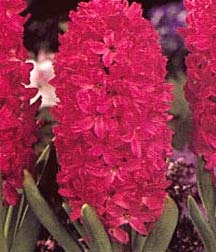Categories
Calendars
Guides
Reviews
Archive
Gallery
Articles
Ask Our Gardening Expert
The first consideration with houseplants is where to
position them. Your first port of call for ideas on position has to be
the label that came with the plant. Follow the positioning
instructions on the label and you will be doing the best you can for
your houseplant. But what do you do if there no label or you have lost
it? The key points to consider, in order of importance are draught
levels, temperature, humidity and light. We discuss each these in some
detail below.
OTHER TOPICS IN HOUSEPLANT CARE
Draught Levels Temperature Other problems for houseplants temperature wise are radiators, heating
vents or any heat source. These will provide areas which are too hot and
which vary wildly as the heat source is turned on and off. Humidity
Plants with thin non-leathery leaves, such as tropical plants
epiphytes (bromeliads, orchids,
lichens, calathea and some
species of ferns and of cacti and succulents), dislike low levels
of humidity. These plants need regular (daily)
mist spraying. If this is not possible, try to stand the plants
over a tray of dampened gravel or stones.
Plants with thin non-leathery leaves, such as tropical plants
epiphytes (bromeliads, orchids, lichens, calathea and some species of ferns
and of cacti and succulents), dislike low levels of humidity. These
plants need regular (daily) mist spraying. If this is not possible, stand
the plants over a tray of dampened gravel or stones. Another great help in increasing the humidity levels for plants is to
place three or more near to each other. This will help them to create
their own micro-climate with a higher than normal level of humidity.
OTHER TOPICS IN HOUSEPLANT CARE

Houseplants do not like draughts, end of story! Generally the air in
houses is dry and draughts will extract water from the leaves at a high
rate. The second problem with draughts is that they exaggerate any
problems with temperature. Try and position your houseplant away from
draughts
Follow the instructions on label but also be aware that daytime and night
time differ significantly in the normal house. This is especially true if
your houseplant is left on the window sill. In this position it will be
very hot when the sun is shining but relatively cold during the night. If
you leave the plant between the window and the curtains at night you will
make the problem much worse. The best place temperature wise for a
houseplant is away from windows and glass doors.
Humidity is a measure of the amount of water in the air. Warm air can
hold more water than colder air (that's why you have condensation on cold
windows in a warm room). Plants need a good level of humidity to help
them conserve water. Low humidity equals a low level of water in the air,
high humidity equals a high level of water in the air.
Boston Fern, click to enlarge
